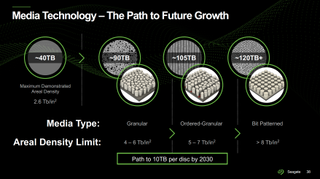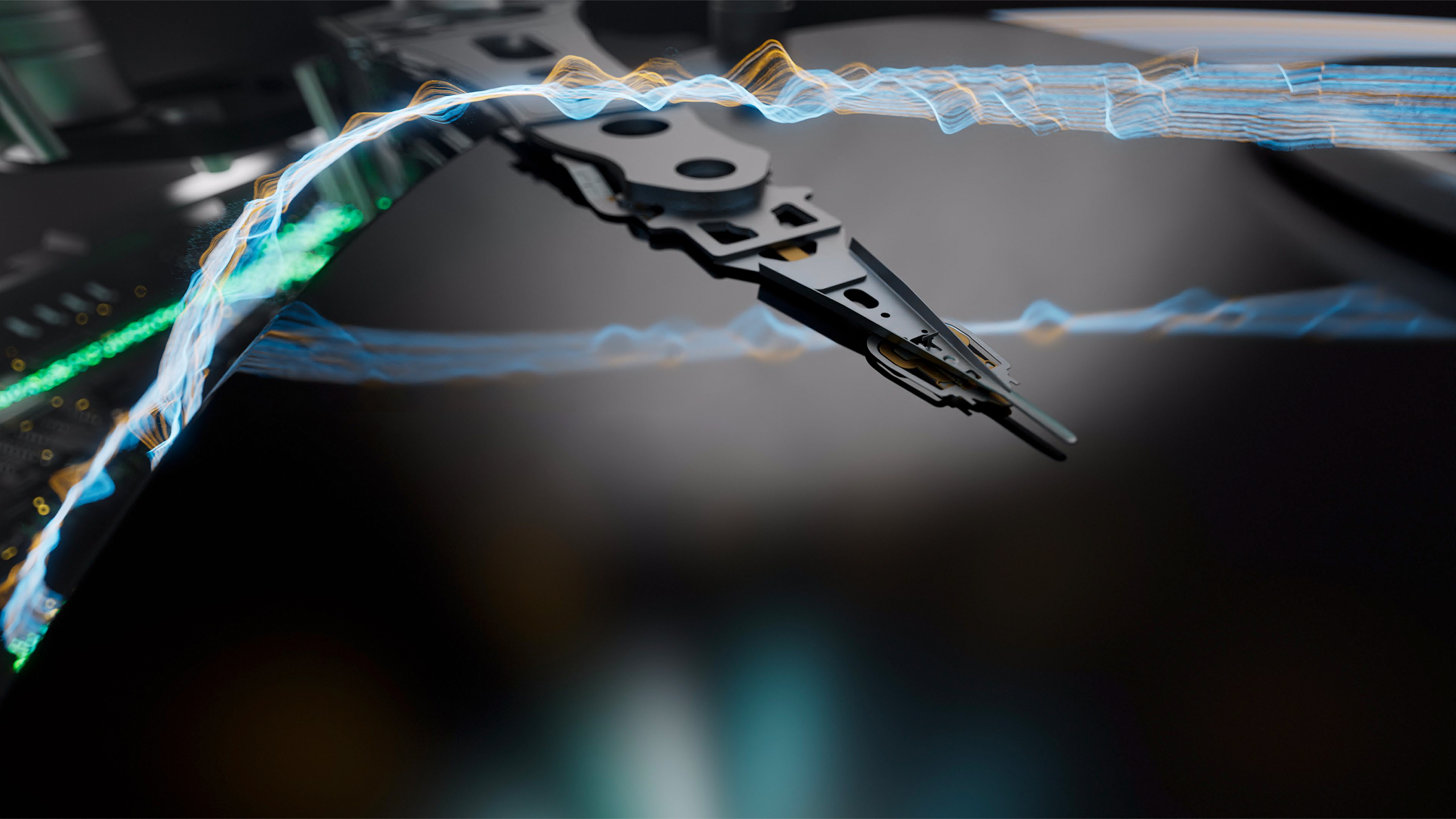Heat-assisted magnetic recording (HAMR) technology promises to increase areal density and hard disk drive capacity by at least two times compared to standard perpendicular magnetic recording (PMR) technology. However, recently demonstrated dual-layer HDD media, which records data bits stacked atop each other in layers, coupled with multi-level heat-assisted recording, promises to at least double what current-generation HAMR technology is capable of. How about a 60 TB HDD now and well over 120 TB in 10 to 15 years?
Research teams from NIMS, Seagate Technology, and Tohoku University have demonstrated the feasibility of multi-level heat-assisted magnetic recording (HAMR) on dual-layer granular media, reports Acta Materialia.

The concept of multi-level magnetic recording for hard drives has been around for some time, but its practical application has been hindered by the absence of suitable media that can store data at various levels. Researchers have tackled this challenge by creating a new type of granular media composed of two FePt-C nanogranular films separated by a Ru-C spacer layer with a cubic crystal structure. This enables separate magnetic recording on each layer under different magnetic fields and temperatures.
By adjusting the laser power and magnetic fields during the writing process, the two FePT layers can be recorded independently, potentially doubling the areal density and HDD capacity without making significant changes in magnetic layer materials.
Regular HAMR-based HDDs use glass platters covered with a magnetic film, such as iron platinum alloy (FePt), that can be recorded when the film is heated with a laser to its Curie temperature (the temperature at which the film alters its magnetic properties) and its magnetic coercivity is lowered.
As the name suggests, dual-layer granular media has two film layers, each with different Curie temperatures and magnetocrystalline anisotropies. The researchers say that such media can enable recording densities of well over 10 Tbit/in^2, meaning 10-platter hard drives with well over 120 TB capacities.
The researchers claim that magnetic measurements and simulations of heat-assisted magnetic recording have indicated that HAMR media can support three-level recording and might even be capable of four-level recording.

It should be noted that while the method is possible in the lab, it looks rather costly as it requires significantly different read/write heads and more complex platters with two (or more) layers of granular magnetic layers. Granular media, ordered granular media, and then bit patterned media promise to increase the areal density of HDD disks without such extreme complexities, so it is hard to imagine dual-layer and multi-layer media being used in the near future. Yet, once the industry gets to bit patterned media, it might look back and reconsider multi-layer media as a means to increase recording density and HDD capacity.


